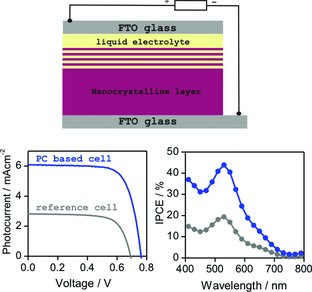A working electrode design based on a highly porous 1D photonic crystal structure that opens the path towards high photocurrents in thin, transparent, dye-sensitized solar cells is presented. By enlarging the average pore size with respect to previous photonic crystal designs, the new working electrode not only increases the device photocurrent, as predicted by theoretical models, but also allows the observation of an unprecedented boost of the cell photovoltage, which can be attributed to structural modifications caused during the integration of the photonic crystal. These synergic effects yield conversion efficiencies of around 3.5% by using just 2 μm thick electrodes, with enhancements between 100% and 150% with respect to reference cells of the same thickness.
